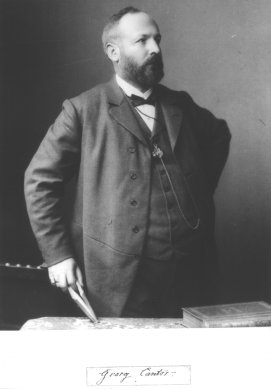Set theory facts for kids
Set theory is a part of mathematics that studies collections of things called "sets". Imagine you have a group of your favorite toys, or a list of numbers. In math, we call these groups "sets". Each toy or number in the group is called an "element" or "member" of the set.
We write sets using curly brackets { } and put commas between the things inside. For example, the set of numbers 1, 2, and 3 looks like this: {1, 2, 3}. This set contains the elements 1, 2, and 3.
History of Set Theory
Set theory was first developed in 1874 by a mathematician named Georg Cantor.
At first, there were some tricky problems when people worked with these collections of objects without very clear rules. One famous problem was called Russell's paradox. It was a puzzle that showed how some ideas about sets could lead to contradictions.
Think about a set that tries to contain "all sets that are not members of themselves." If this set were a member of itself, then by its own rule, it shouldn't be. But if it weren't a member of itself, then by its own rule, it should be! This kind of puzzle showed that the early ideas of set theory needed to be made stronger and clearer.
Mathematicians like Zermelo and Bertrand Russell helped to improve set theory, making it more solid and preventing these kinds of paradoxes.
What is a Set?
Set theory starts by giving clear rules about what can be a set. Then, it provides ways to create new sets from ones you already know. Collections of objects that don't follow these strict rules are sometimes called "classes" instead of sets. By using only sets, mathematicians can avoid the tricky problems that "classes" might cause.
- Example: Let's say we have an object, like a number, and a set. If that object is inside the set, we say it's a "member" or "element" of the set. We write this using a special symbol: o ∈ A means "object o is an element of set A." Since sets themselves can be objects, one set can also be a member of another set!
Subsets
There's a special relationship between two sets called a "subset." If every single member of set A is also a member of set B, then set A is a subset of set B. We write this as A ⊆ B.
For example:
- The set {1, 2} is a subset of {1, 2, 3} because both 1 and 2 are in the second set.
- But the set {1, 4} is NOT a subset of {1, 2, 3} because 4 is not in the second set.
It's also true that any set is a subset of itself. If you want to talk about a set that is smaller than another set (meaning it doesn't include all the same elements), you can use the term proper subset.
Some numbers can even be defined using sets in a special way. For example, in one system, 1 could be defined as the set {1}, 2 as {1, 2}, and so on.
See also
 In Spanish: Teoría de conjuntos para niños
In Spanish: Teoría de conjuntos para niños



